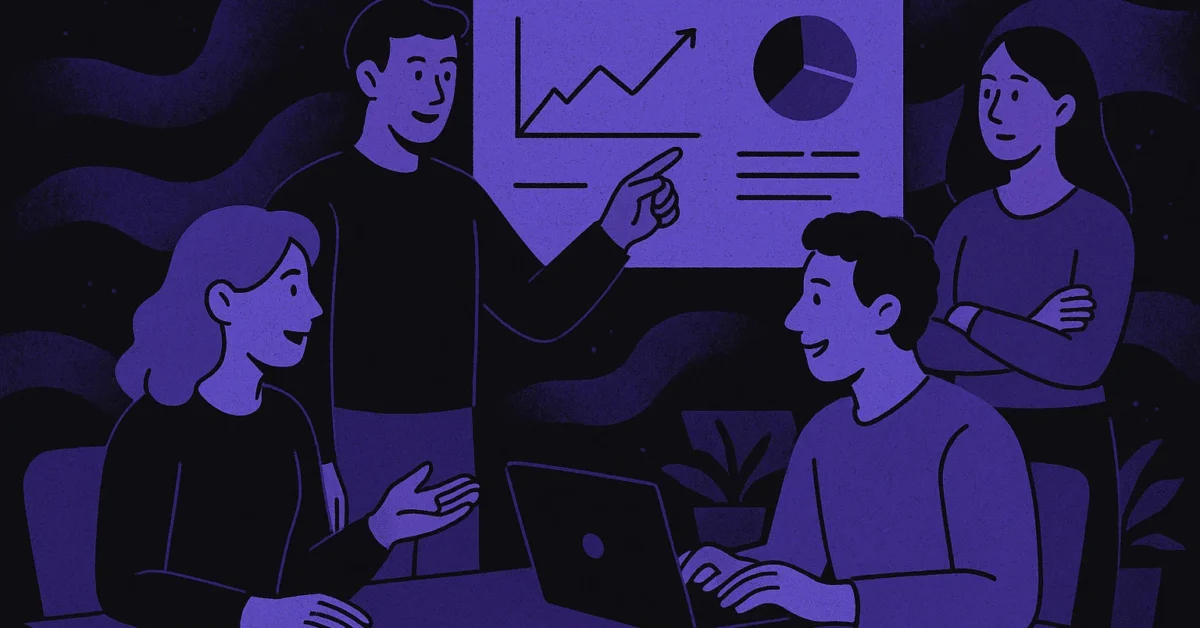Product teams burn through budgets trying to validate designs. A single round of user interviews might cost thousands in recruitment fees, moderator time, and analysis hours. Then you wait three weeks for results that tell you what you already suspected. Meanwhile, your competitors ship features while you’re still scheduling focus groups.
Evelance changes this equation by compressing validation cycles from weeks to hours. The platform uses predictive audience models to simulate user reactions, letting teams test designs against specific customer segments without the traditional overhead. Here’s how the platform cuts research costs while maintaining the depth teams need for confident decisions.
1. Replace Expensive Recruitment with Instant Audience Selection
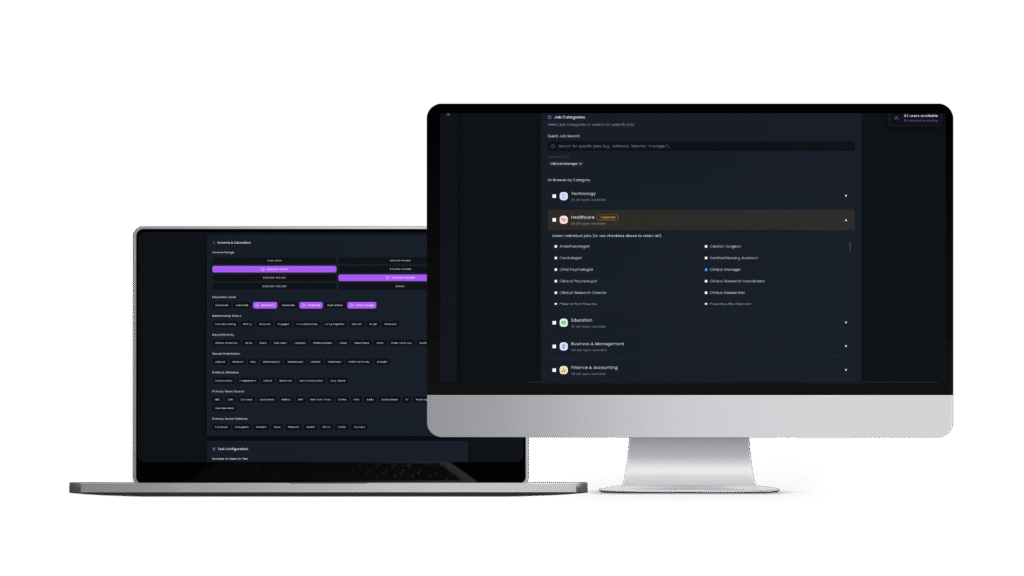
Recruiting participants for traditional research studies costs between $75 to $200 per person, depending on specialization. Finding healthcare professionals or senior executives pushes that number higher. Add screening time, no-show rates, and the need for backup participants, and recruitment alone can consume 30% of your research budget.
The platform eliminates recruitment costs entirely through its database of over one million predictive audience models. Instead of posting on recruitment platforms and waiting days for responses, you select your exact audience in minutes. Need reactions from nurses aged 35-45 who work night shifts and manage family health decisions? Filter by those exact criteria and start testing immediately.
Each predictive model includes complete behavioral profiles with personal stories, professional backgrounds, and psychological traits. The Intelligent Audience Engine generates these models using publicly available data, creating personas that match your specifications down to preferred news sources and social media habits. You’re testing against profiles that think and react like your actual customers… without paying recruitment fees or managing participant logistics.
The Custom Audience Builder takes this further by letting you describe audiences in plain English. Type “parents of teenagers who worry about screen time and mental health” and the system generates matching personas instantly. Each generated profile maintains the same depth as pre-built models, complete with Deep Behavioral Attribution and Emotional Intelligence System that captures life events, motivations, and environmental contexts that shape their responses.
2. Compress Multi-Week Research Cycles to Single-Day Validation
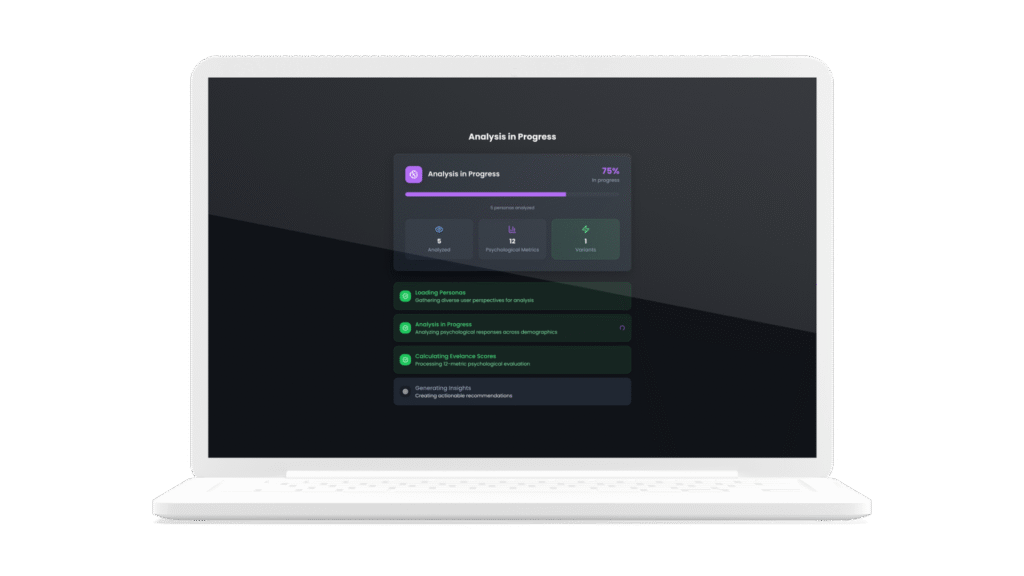
Traditional research follows a predictable timeline. Schedule interviews two weeks out. Conduct sessions over another week. Transcribe recordings. Analyze findings. Create presentations. By the time insights reach the product team, a month has passed and market conditions may have changed.
Evelance delivers complete analysis within 10 to 30 minutes of uploading your designs. Upload a PDF mockup or enter a live URL, select your audience, and receive scores across 12 psychological dimensions before your next meeting ends. The Dynamic Response Core processes each persona’s reaction in parallel, considering factors like time pressure, financial situations, and prior online interactions that affect real user behavior.
The speed advantage compounds when you need to test iterations. After reviewing initial results, teams often want to test refined versions. Traditional methods would require another complete research cycle. With Evelance, you upload the revised design and get comparative results the same day. This rapid iteration lets teams test five or six versions in the time traditional research would evaluate one.
Consider how this acceleration affects project timelines. A healthtech company recently used Evelance to validate prescription tracking app mockups. What would normally require a month of interviews and usability testing compressed into two days. The product manager uploaded mockups, identified low Credibility Assessment scores, implemented recommended changes, and validated improvements before their weekly leadership review. Development started three weeks earlier than planned because validation happened in parallel with final design work rather than sequentially after.
3. Reduce Analysis and Reporting Time by 90%

Research teams spend roughly 40% of project time on analysis and reporting. Transcribing hour-long interviews, coding responses, identifying patterns, and creating presentations consumes weeks of expensive consultant or employee time. A typical analysis phase for 20 user interviews might require 80 hours of work at $150 per hour.
Evelance automates the entire analysis pipeline. The platform measures responses across six core consumer psychology scores like Interest Activation and Value Perception, plus six enhanced scores including Social Acceptability and Action Readiness. Results appear as radar charts showing strengths and weaknesses at a glance. Color coding immediately highlights which areas need attention without requiring manual interpretation.
Individual persona insights provide the qualitative depth traditionally found in interview transcripts. Each predictive model generates authentic responses explaining their reactions. You read comments like “I wouldn’t link my pharmacy account until I see proof that this app is HIPAA-compliant” or “The reminder setup asks me to enter times manually. I’d prefer pre-filled schedules based on typical refill cycles.” These responses give you the why behind the scores without hours of transcript analysis.
The platform generates prioritized recommendations automatically. Instead of consultants spending days synthesizing findings into action items, you receive a priority matrix showing high-impact, low-effort changes first. Each recommendation includes specific implementation guidance and psychological reasoning explaining why the change will work. Export functions let you share results immediately through secure links with password protection, eliminating the presentation creation phase entirely.
For A/B tests and competitor analysis, the platform provides side-by-side comparisons with statistical indicators showing which design performs better on each dimension. You see margin of victory analysis and demographic correlations that would typically require specialized statistical software and expertise to calculate. The same analysis that might cost $5,000 from a research consultancy happens automatically as part of your standard test.
4. Test Multiple Variants Without Multiplying Costs
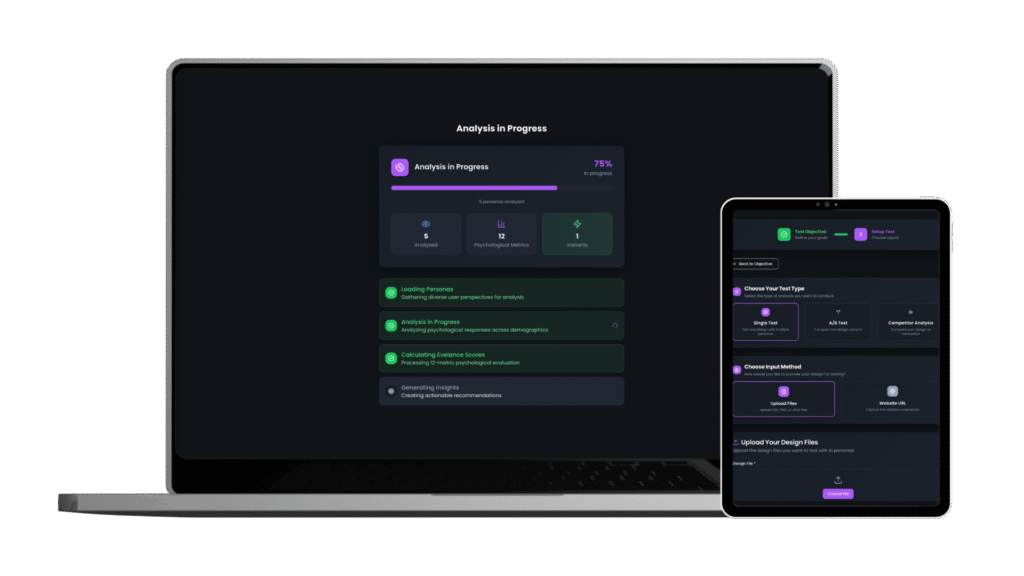
Testing design variations traditionally means running separate studies for each option. Want to compare three homepage layouts? That’s three recruitment cycles, three sets of sessions, and three analysis phases. Costs scale linearly with each additional variant, quickly making comprehensive testing prohibitive.
Evelance handles A/B comparisons and competitor analysis within the same test structure. Upload two designs, select your audience once, and receive comparative analysis across all psychological dimensions. The platform shows which version wins on each metric, helping teams make decisions based on specific goals. If you’re optimizing for trust, focus on the Credibility Assessment scores. If engagement matters most, examine Interest Activation and Emotional Connection results.
Competitor benchmarking follows the same efficient model. Enter your design and a competitor’s URL, and the system captures both for parallel analysis. You see exactly where you outperform competitors and where gaps exist. This competitive intelligence would traditionally require mystery shopping exercises or expensive competitive research studies costing thousands per competitor analyzed.
The credit system makes multi-variant testing predictable and affordable. Each predictive audience model uses one credit, so testing a design with 10 personas costs 10 credits. Running the same test with two designs for A/B comparison still uses 10 credits total, not 20. This pricing structure encourages comprehensive testing without budget surprises… teams can explore multiple directions knowing exactly what each test costs.
Project organization features let you group related tests together, making it simple to track iterations and compare results over time. You might create a project called “Q4 Landing Page Optimization” and run dozens of tests within it, building a complete picture of what resonates with your audience without the traditional cost multiplication of extensive research programs.
5. Enable Continuous Testing Throughout Development
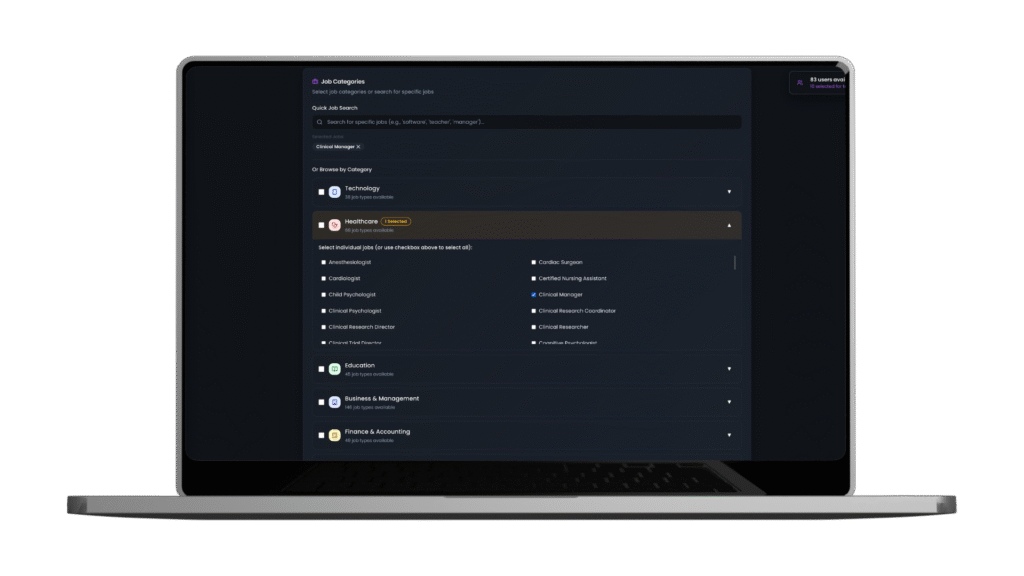
Traditional research happens at specific milestones due to cost and time constraints. Teams might validate initial concepts, then wait until near launch for final testing. This creates risk, as problems discovered late in development cost exponentially more to fix. But running continuous research through traditional methods would bankrupt most product budgets.
Evelance’s subscription model enables continuous validation without per-test anxiety. The monthly plan includes 100 credits that reset each billing cycle, while the annual plan provides 1,200 credits. Teams can test regularly throughout development rather than saving research for critical moments. Early concepts get tested. Iterations get validated. Pre-launch versions get final checks. This continuous feedback loop catches problems when they’re cheap to fix.
The platform’s speed makes ad-hoc testing practical. When a designer proposes a new approach during a meeting, you can test it that afternoon rather than debating hypothetically. When stakeholders question a design decision, you can provide data from your target audience within hours rather than opinions. This immediacy changes how teams make decisions, replacing lengthy debates with quick validation cycles.
Small tests become economically viable. Want to test a single call-to-action button with five personas? That’s five credits and 10 minutes for actionable insights. Traditional research wouldn’t even consider such a focused test due to setup costs. But these small, frequent tests often prevent larger problems by catching issues early. A poorly worded headline discovered through a quick five-persona test saves the extensive rework of fixing it after development.
The platform handles various interface types and contexts, from mobile app onboarding flows to e-commerce checkout processes. This versatility means teams can validate every customer touchpoint without switching tools or methods. Your subscription covers testing websites, apps, dashboards, advertisements, and even PDF presentations. Each test uses the same credit system and delivers comparable psychological scores, creating a consistent measurement framework across all your products.
Integration with existing workflows happens naturally because Evelance augments rather than replaces current research methods. Use the platform for rapid directional insights, then conduct targeted interviews to probe deeper on specific findings. This hybrid approach maximizes the value of both AI-powered and traditional research while keeping costs manageable. Teams report cutting their overall research budgets by 40-60% while actually increasing the amount of validation they perform.
Cost Reduction in Practice
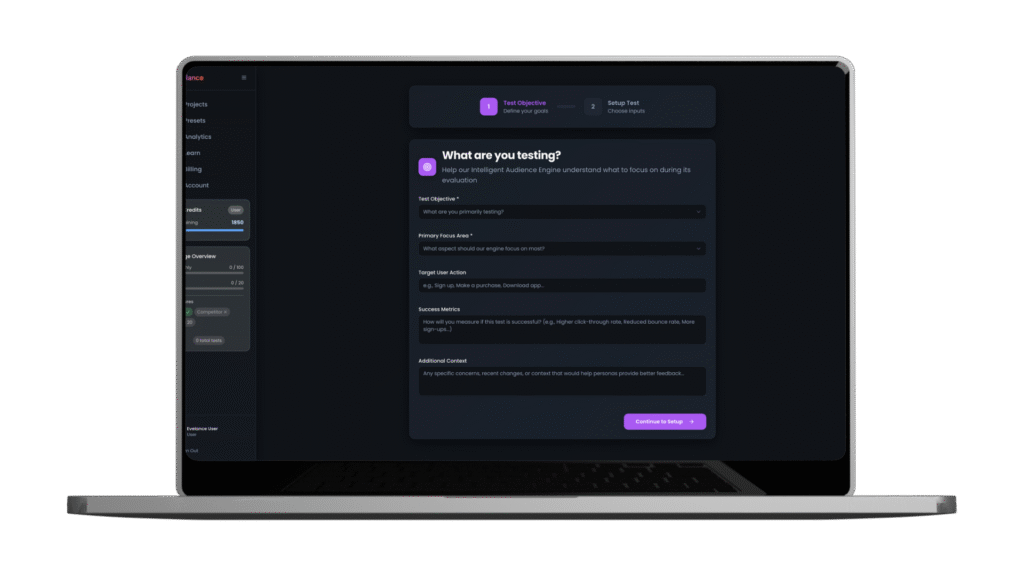
The real savings come from how these efficiencies compound. A typical product team might run 10 research studies per quarter at $15,000 each, totaling $150,000. With Evelance, the same team could run 50 validation cycles for under $5,000 annually, freeing budget for the occasional deep-dive study when truly needed. The math becomes even more favorable when you factor in the opportunity cost of delayed launches and the risk reduction from catching problems early.
Teams using Evelance report specific savings patterns. Recruitment costs drop to zero. Analysis time shrinks by 90%. Testing velocity increases 5-10x while total research spend decreases. But the largest savings often come from avoiding costly mistakes that traditional research might miss due to small sample sizes or time constraints. When you can afford to test every meaningful decision, you make fewer expensive errors.
The platform pays for itself through a single prevented mistake. One poorly designed checkout flow that reduces conversion by 2% might cost an e-commerce site hundreds of thousands in lost revenue. Discovering and fixing that issue through rapid Evelance testing costs less than the revenue lost in a single day of poor performance. This risk reduction represents the hidden value beyond the obvious cost savings… you’re spending less on research while simultaneously reducing the much larger costs of building the wrong things.


 Sep 26,2025
Sep 26,2025 